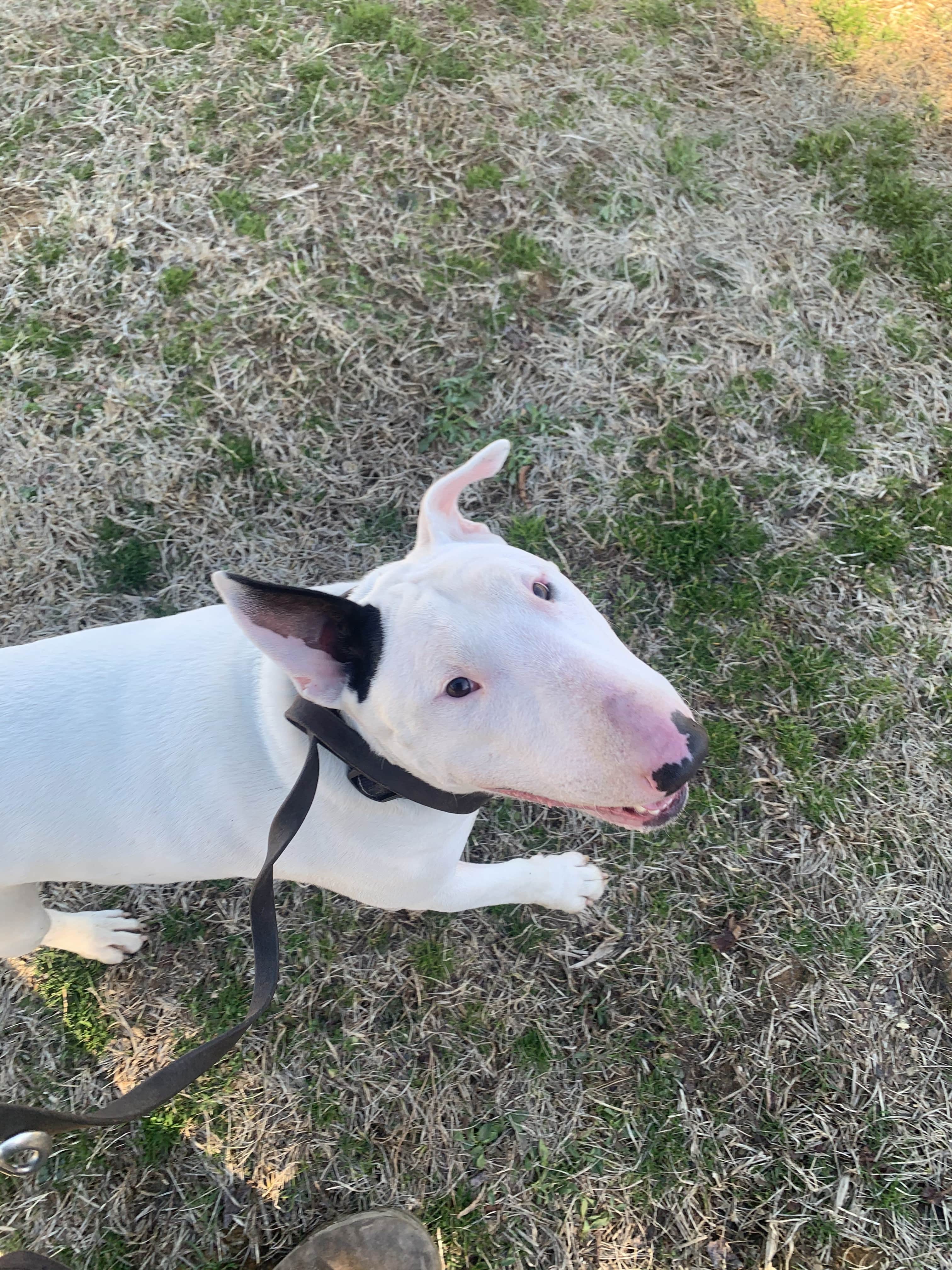Communicating Beyond Sound: Ragnar’s Journey as a Deaf Dog
Ragnar, a spirited and loving bull terrier, was born with a unique challenge: he was completely deaf. While his inability to hear set him apart, it also presented an opportunity to approach training in a way that relied entirely on visual, tactile, and environmental cues. Ragnar’s journey wasn’t just about overcoming a limitation—it was about tapping into his intelligence and adaptability to help him thrive in a world without sound.
Training Ragnar required creativity, patience, and a tailored approach that focused on three key areas: maintaining attention, teaching commands through hand signals, and safely introducing an e-collar’s vibration function to establish reliable recall.
Building Attention and Focus
For any dog, attention is the foundation of good training. For Ragnar, keeping his focus was especially critical since he couldn’t rely on verbal cues to know when to look at me. I began by teaching Ragnar that eye contact was a rewarding behavior. Holding a treat near my face and rewarding him for making eye contact helped establish this connection.
In addition, tactile signals became vital for gaining his attention when he wasn’t looking at me. A gentle tap on his shoulder or creating vibrations on the floor by lightly stomping became my way of calling his attention without sound. These methods ensured that Ragnar always had a way to “listen” and stay engaged with me.
Command Training Through Hand Signals
Since Ragnar couldn’t hear verbal commands, hand signals became his primary language. Each command was paired with a distinct gesture, designed to be clear and consistent. For example, teaching him to “sit” involved an upward motion of my hand, luring him into the position with a treat and marking the moment he sat with a visual thumbs-up as his reward marker.
Over time, Ragnar built a repertoire of commands that he responded to eagerly. The use of hand signals not only helped him understand what was expected but also created a strong, non-verbal bond between us. Consistency was key—every hand signal had to be precise and unchanging to ensure Ragnar could confidently interpret my instructions.
Recall Training with the E-Collar’s Vibration Function
Recall, or the ability to call a dog back reliably, is one of the most important skills any dog can learn. For Ragnar, the solution was to use the vibration function on an e-collar. Introducing this tool required careful planning to ensure it was a positive experience.
-
Introducing the Vibration: I started by pairing a brief vibration with a treat and a happy gesture. Ragnar quickly associated the vibration with something positive, making it a tool for communication rather than correction.
-
Pairing with a Recall Gesture: Once he understood the vibration, I paired it with a hand signal for “come.” Activating the vibration and then gesturing for recall taught him that the vibration meant to look for me and follow the signal.
-
Building Reliability: Training began in low-distraction environments and gradually moved to more challenging settings. Ragnar learned to respond to the vibration reliably, even when he was exploring or distracted.
This method gave Ragnar a freedom of movement that he couldn’t have safely enjoyed otherwise, while ensuring that he was always connected to me through the vibration signal.
Ragnar’s Transformation
Through consistent training, Ragnar blossomed into a confident and obedient dog. The challenges of his deafness became opportunities for creativity, and his unique training journey strengthened our bond. Ragnar learned to thrive on visual and tactile communication, mastering everything from basic obedience to advanced commands.
Today, Ragnar lives happily with his family, who have embraced the tools and techniques that allow them to communicate with him effectively. His success story is a testament to the adaptability of dogs and the power of training tailored to an individual’s needs.
Key Takeaways from Ragnar’s Training
Ragnar’s journey highlights several important lessons for training a deaf dog:
- Attention is Everything: Use eye contact and tactile cues to maintain focus.
- Hand Signals are a Lifeline: Clear, consistent gestures can replace verbal commands with ease.
- Technology Bridges the Gap: The e-collar’s vibration function is a safe, effective tool for recall and communication.
Training Ragnar wasn’t just about teaching commands—it was about building a language of trust, understanding, and connection. His story proves that with the right approach, every dog can overcome their challenges and achieve their full potential.
